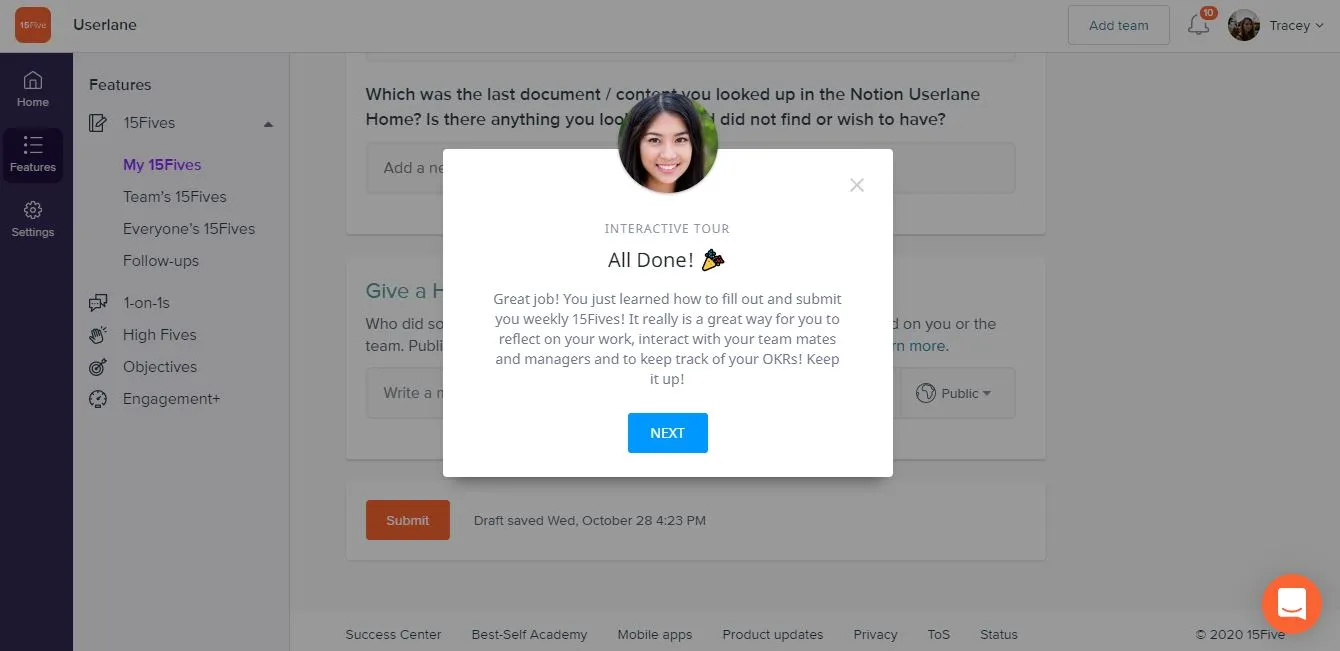The best software apps to promote employee well-being

As an employer or manager, we’re sure you’ve faced numerous, unexpected challenges as you’ve shifted to a remote setup. From introducing new software applications to figuring out how to take care of your employees’ well-being, these times haven’t been easy at all.
But one of the positives of navigating a pandemic in 2020 and 2021 is the access we have to a myriad of software applications that enable us to work remotely. And while learning to work with new software can be overwhelming and even harm employee performance (more on that later because using software can be simple ????), there are apps available that can genuinely enhance employee well-being, which, in turn, increases engagement and productivity.
But what are these apps? And how, exactly, do they improve employee well-being,* especially socially and mentally (by reducing cognitive stress)?
* Note: There are various definitions and understandings of employee well-being. As Benefex explains, “the ultimate goal of wellbeing is to minimise stress, improve engagement and eliminate physical and mental ill-health where possible.”
Table of Contents
Improving employee well-being with four easy-to-use software applications
Zoom
(It may sound cliché and so obvious to mention Zoom here, but hear us out ????).
Research published in BMC Public Health on the mental and physical health effects of working from home reveals that “those working more days at home [experience] greater emotional exhaustion and cognitive stress associated with reduced social support from their colleagues.” The same study further indicates that “colleagues’ support and communication [are] important influences on psychological well-being.”
One simple yet effective way to achieve improved social support is to encourage your team to have regular Zoom (or whichever video conferencing software you use!) meetings that aren’t work-related. Brett Burley, who works as a project manager for a company in New Zealand, says that the managers in his company encourage virtual afternoon tea breaks or after-work drinks to maintain the work environment’s social aspect. Employees are also encouraged to leave their cameras on to prevent losing that “face-to-face” social interaction.
Slack
At Userlane, we have something called the “donut-coffee-lounge” on Slack. Here, Userlaners (the name for Userlane employees!) get regularly and randomly paired with another Userlaner. We then schedule a quick coffee break for a social, non-work-related chat!
We also have our Userlane Buddy System (called the “buddyprogram” on Slack) for new employees where a Userlaner, who has been at Userlane for more than six months, helps to onboard and support the new employee. This includes scheduling regular meetings to see how they’re doing and where they need extra support if necessary.
Creating and maintaining channels like these are effortless and can go a long way in providing much need-needed social support to employees.
But just bear in mind: Providing social support doesn’t mean you need to go out of your way or do something elaborate. Just sending your team members a supportive note once in a while via Slack or genuinely asking them how they are doing can make all the difference when it comes to motivating your team and enhancing productivity.
15Five
At Userlane, we use 15Five for OKRs, weekly check-ins, and self-reflection. It is these weekly check-ins and opportunities for self-reflection that have a direct impact on our well-being. Why?
Well, each week, we answer the questions, “What were your achievements this week” and “What did you struggle with, and how can I support you?”. Each department manager then reviews these check-ins and can schedule a one-on-one meeting to address any challenges if needs be. Not only does this contribute to our social well-being (having face-to-face meetings with our managers), it also has a direct effect on our mental well-being and productivity because
- we’re given support where needed,
- we’re able to evaluate the progress we’re making (even during difficult weeks), and
- we gain a better understanding of what we need to do to be successful within our job roles.
If you don’t have some sort of self-review/weekly check-in system in place, we highly encourage you to do so!

Userlane
With the switch to remote work, your company has probably introduced more software to the stack (and will continue doing so). With software apps continually undergoing changes and updates, keeping up with it all can be stressful and tiring—especially if the application in question is a complex one. But as we mentioned in the intro, software can be simple to use with digital adoption platforms like Userlane.
But how does Userlane make software simple to use? And how does this impact mental well-being?
Well, Userlane’s interactive guides lead employees through digital processes in any software logically and step-by-step. Everything except the specific step the employee needs to take is blocked in the UI, and the interactive guides provide just-enough and just-in-time information. This means that the guides offer value and benefit at specific moments, thus reducing cognitive overload or stress by eliminating distractions and unnecessary information.
Userlane also comes with a Virtual Assistant, which is available on-demand to provide contextual support, and our features, such as advanced segmentation, ensure that specific users only need to see what’s relevant to them.
By implementing a digital adoption platform like Userlane, you’ll be making software easier and more enjoyable to use, which, in turn, improves engagement and productivity and enhances mental well-being by reducing cognitive stress.
Becoming a forward-thinking organization: Putting employee well-being first
Of course, we could sit here all week and list hundreds of apps that enhance employee well-being in many different ways. But we don’t have all week, so we just gave you some of the easiest but highly effective tools to implement where you’ll see an immediate impact.
For this post, we wanted to draw attention to the state of employee well-being (particularly social and mental well-being) and encourage you—as managers, leaders, and employers—to play more of an active role in supporting your employees. Why? Because a) employees are people first and b) a happy, healthy, and supported workforce is a productive and engaged one.
Strive to be a forward-thinking company that really celebrates and supports your employees and actively promotes their well-being, especially as remote work becomes a more permanent fixture in the future.
If you’re curious to find out more about Userlane and how it can help reduce cognitive stress and enhance productivity when it comes to using software, then schedule your free demo with us!

